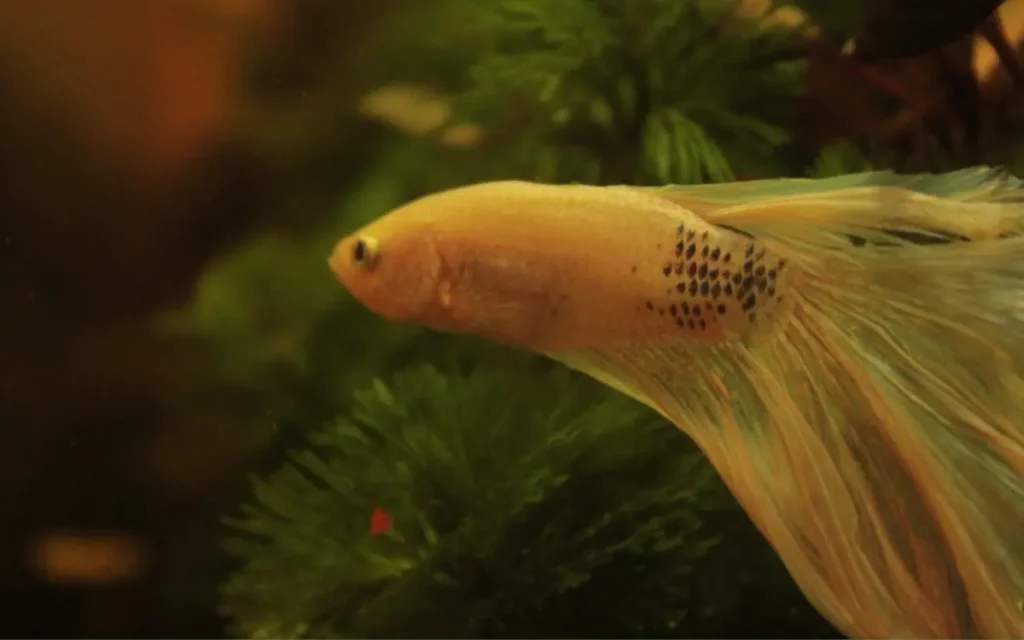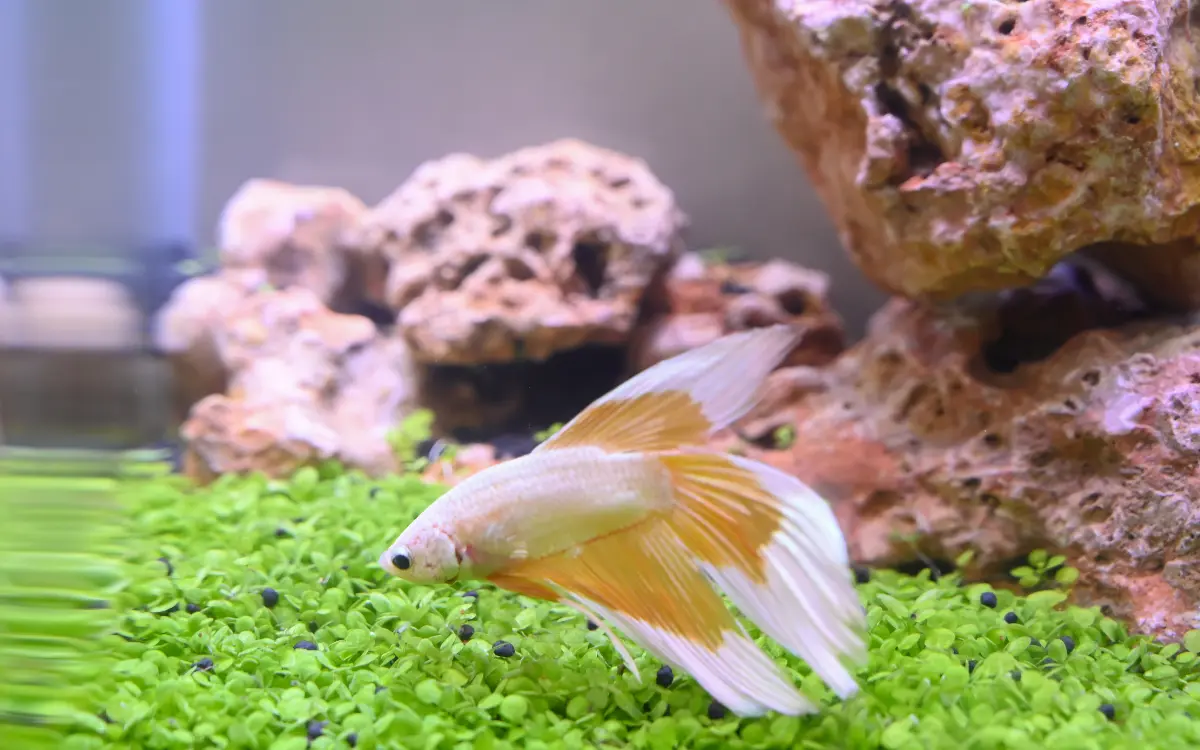Betta fish are vibrant and beautiful pets that require proper care. Their colorful fins and active personalities make them a popular choice for aquarium hobbyists.
However, Betta fish have specific needs that must be met to ensure their well-being.
Creating a comfortable environment is crucial to keeping your Betta happy and healthy, reducing stress, and allowing them to thrive.
1.Choosing the Right Tank
Minimum Tank Size
When selecting a tank for your Betta, size matters. A minimum of 5 gallons is recommended to provide enough space for your Betta to swim freely and reduce stress.
Smaller tanks or bowls are often marketed for Betta fish, but they do not provide the room or stable water conditions necessary for your Betta to live comfortably.
Avoiding Bowls
Bowls may look appealing, but they come with a host of disadvantages. Due to their small size, bowls make it difficult to maintain water parameters, leading to harmful fluctuations in temperature and water quality.
Additionally, bowls lack filtration, resulting in poor water conditions that can quickly harm your Betta’s health.
Tank Shape Considerations
When choosing a tank shape, rectangular tanks are generally preferred. They provide more horizontal swimming space, which Betta fish enjoy.
Hexagonal or tall tanks may look unique, but they often limit the surface area for oxygen exchange and reduce the swimming area available for your Betta.
A rectangular tank ensures your Betta has both horizontal space and good water quality.
3.Filtration and Heating
Importance of a Gentle Filter
Bettas are not strong swimmers, and they thrive in calm water. It is important to choose a gentle filter that does not create strong currents.
Sponge filters are an excellent option, as they provide both filtration and gentle water movement, making them ideal for Betta fish.
Adjustable filters can also work well if you can set them to a low flow rate.
Heater Selection
Betta fish are tropical creatures that need warm water to stay healthy. Keeping the water temperature between 78-80°F is essential for their metabolism and immune system.
Choose a reliable aquarium heater with adjustable settings to ensure the temperature stays within the ideal range.
Monitoring Tools
To maintain a stable environment, it’s important to use a thermometer to monitor water temperature regularly.
A digital thermometer provides accurate readings and helps you ensure that the temperature remains consistent, preventing stress and health issues for your Betta.
4.Substrate and Decorations
Substrate Types
The substrate is the material that lines the bottom of your Betta’s tank. Gravel and sand are common choices, but smooth gravel is often the best option for Bettas.
It provides a natural look and allows beneficial bacteria to thrive, which helps keep the tank clean. Sand can also be used, but it may be more challenging to clean.
Decorations for Comfort
Betta fish love to explore and hide, so adding decorations is important for their comfort. Caves, driftwood, and silk plants create hiding spots where your Betta can rest and feel secure.
Driftwood also adds a natural aesthetic and can help in maintaining a slightly acidic pH.
Safety Tips
Avoid decorations with sharp edges, as Betta fish have delicate fins that can easily be torn.
Always choose smooth items, and if you use plastic plants, ensure they are Betta-safe and do not have rough edges that could injure your fish.
5.Live Plants vs. Artificial Plants

Benefits of Live Plants
Live plants provide numerous benefits for your Betta’s tank. They help oxygenate the water, create a natural environment, and reduce stress by offering hiding places.
Live plants like Java fern, Anubias, and Marimo moss balls are easy to care for and perfect for Betta tanks.
Low-Maintenance Live Plants
Java fern and Anubias are excellent choices for Betta tanks because they require low light and minimal care.
Marimo moss balls not only look great but also help absorb nitrates, contributing to better water quality.
Artificial Plant Considerations
If you choose artificial plants, opt for silk plants over plastic ones. Silk plants are soft and won’t damage your Betta’s delicate fins.
Ensure that the plants are designed specifically for aquariums and do not have any sharp edges.
6.Water Parameters
Proper water conditions: Maintaining the right water parameters is essential for Betta fish health. Aim for a pH level between 6.5-7.5, as Bettas prefer slightly acidic to neutral water. Consistent temperature is also crucial; keep the water between 78-80°F to ensure your Betta remains healthy and comfortable.
Water cycling: Before adding your Betta to its tank, it’s important to cycle the tank. The nitrogen cycle establishes beneficial bacteria that help break down harmful ammonia into nitrites and eventually nitrates. This process can take 4-6 weeks but is crucial for creating a stable environment that prevents toxic buildup.
Water conditioners: Tap water contains chlorine and chloramine, which are harmful to Betta fish. Always use a water conditioner to neutralize these chemicals and make the water safe. Additionally, regularly test the water parameters to monitor pH, ammonia, nitrite, and nitrate levels, ensuring they stay within safe limits.
7.Lighting and Tank Placement
Lighting: Provide a gentle light schedule of 8-10 hours per day to mimic a natural day-night cycle.
Avoid direct sunlight: Direct sunlight can cause temperature fluctuations and promote algae growth, so place the tank away from windows.
Quiet location: Choose a quiet location for the tank to minimize stress for your Betta.
8. Feeding Your Betta
High-quality Betta food: Feed your Betta a balanced diet of high-quality pellets, supplemented with freeze-dried or frozen treats like bloodworms.
Feeding schedule: Feed your Betta 1-2 times a day, providing only as much food as they can eat in 2-3 minutes to avoid overfeeding.
Treat days: Fasting your Betta one day a week can help prevent digestive issues.
9. Maintenance and Care
Weekly water changes: Perform weekly water changes of 25-30% to maintain water quality without disrupting the beneficial bacteria.
Cleaning tips: Clean the tank and filter gently to avoid harming beneficial bacteria; use a gravel vacuum to remove debris from the substrate.
Monitoring health: A healthy Betta is active, has vibrant colors, and eats well. Watch for signs of illness such as clamped fins, lethargy, or white spots.
Conclusion
Creating a comfortable environment for your Betta is key to their health and happiness.
With proper care, you can enjoy the beauty and personality of your Betta fish for years to come.

